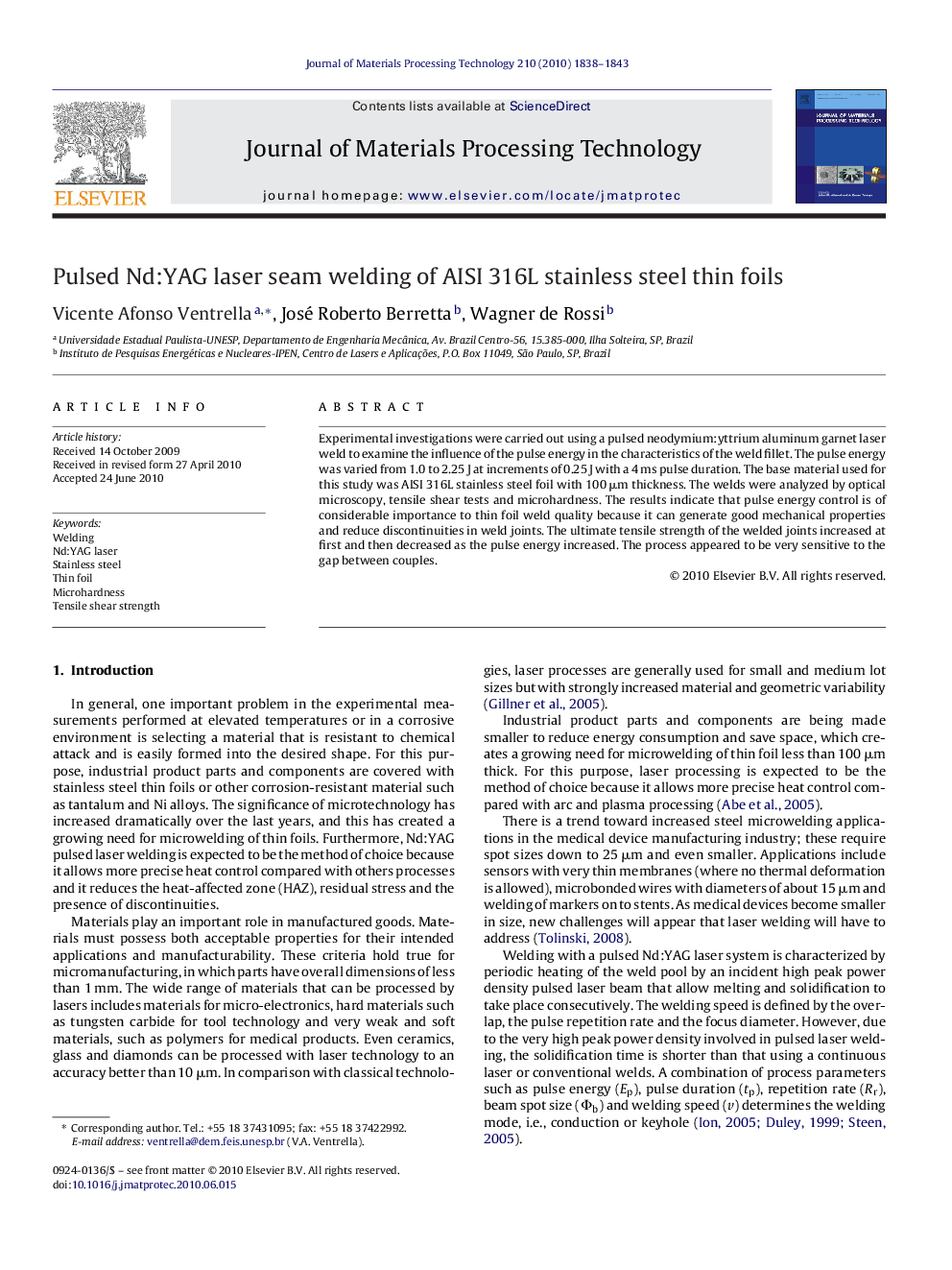| Article ID | Journal | Published Year | Pages | File Type |
|---|---|---|---|---|
| 794927 | Journal of Materials Processing Technology | 2010 | 6 Pages |
Experimental investigations were carried out using a pulsed neodymium:yttrium aluminum garnet laser weld to examine the influence of the pulse energy in the characteristics of the weld fillet. The pulse energy was varied from 1.0 to 2.25 J at increments of 0.25 J with a 4 ms pulse duration. The base material used for this study was AISI 316L stainless steel foil with 100 μm thickness. The welds were analyzed by optical microscopy, tensile shear tests and microhardness. The results indicate that pulse energy control is of considerable importance to thin foil weld quality because it can generate good mechanical properties and reduce discontinuities in weld joints. The ultimate tensile strength of the welded joints increased at first and then decreased as the pulse energy increased. The process appeared to be very sensitive to the gap between couples.
